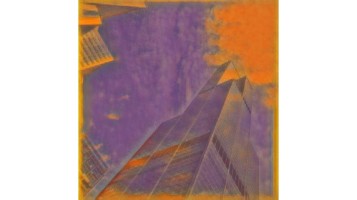Mark Rothko is a controversial artist that provides an interesting example for studying color in artwork. Why do people continue to find his paintings so compelling? This article will look at the fascinating style of Mark Rothko, revealing how he became one of the most celebrated American artists ever and the reasons behind his lasting influence on the world of art.
Mark Rothko’s technique involved using varying brushstrokes and sometimes spreading or sweeping the brush to give depth to the color tones in his abstract ‘color field’ paintings. He would experiment with paint and mix different ingredients into the paint layers to give areas unique color.
Rothko’s technique allowed him to add variation to the shades of his color field paintings. Although Rothko died in 1970, his work remains popular among both art lovers and investors, as incredibly – his pieces continue to trade hands for millions or tens of millions of dollars at auctions.
| Name | Markus Yakovlevich Rothkowitz |
| Date of Birth | 25 September, 1903 |
| Date of Death | 25 February, 1970 |
| Location | Long Island, New York, United States |
| Movements | Abstract Expressionism, Color Field |
| Artistic Focus | Paintings |
| Favorite Medium | Oil on Canvas |
Rothko Retrospective: Brief Background
Table of Contents
Mark Rothko (1903–1970) was an American painter is famous for his large-scale paintings containing what we call color fields. Raised in a Jewish family, Rothko was originally born in Russia and left for the United States in 1913, and later studied art at Harvard University under Edmund Tarbell.
One of his first solo shows was in 1935 and caused quite a stir among critics and collectors alike. He became one of Jackson Pollock’s teachers at The New School, where he continued to teach until 1958 when he began teaching privately.
His work has been exhibited widely throughout Europe and America, including numerous one-man shows at prestigious institutions such as MoMA, LACMA, MOCA (the National Museum of Contemporary Art), Tate Modern, Walker Art Center, and others.

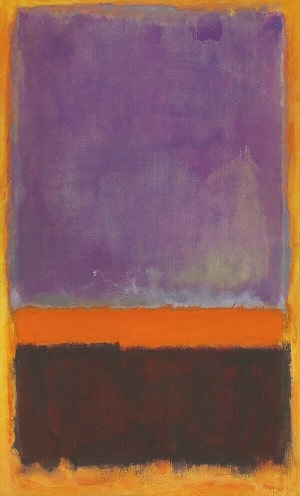
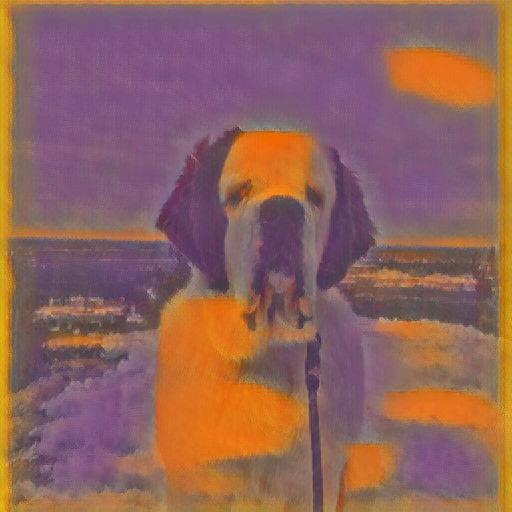
How Did Rothko Make Paintings?
Artists have different focus levels for creating their works. Some people have consistent and predictable periods of creativity. For others, creativity comes in random fits and bursts. How a painter creates their art has a large effect on their style.
As a general rule, Mark Rothko made paintings by secluding himself and focusing on the artwork for days at a time. Rothko concentrated purely on one painting and sometimes spent years producing his works. For example, his Seagram Murals took over two years to paint.
There were even times when he wouldn’t eat anything during these periods of creation. His devotion to painting was so important to him that it overtook all other aspects of his life–he said once, “I can’t imagine having any other kind of life.” Over time, people began calling him an artist’s artist; they started talking about him more than buying his work.
Even before his color field paintings, Rothko really couldn’t care about opinion. He didn’t want fame or recognition for being good, but because he wanted to see if he could paint a particular way. He believed that if you love something that much, you don’t think about whether someone else is going to appreciate it.
I am not an abstractionist… I am not interested in the relationships of color or form or anything else… I’m interested only in expressing basic human emotions – tragedy, ecstasy, doom, and so on – and the fact that a lot of people break down and cry when confronted with my pictures show that I communicate those basic human emotions… The people who weep before my pictures are having the same religious experience I had when I painted them. And if you, as you say, are moved only by their color relationships, then you miss the point!
Mark Rothko [1]
He thought you are interested in making it as beautiful as possible. In the end, if you start putting the art on sale then your judgment is faulty. The art may be pretty and look nice in somebody’s house but not necessarily in some museum years later.
Along with taking painting seriously, Rothko always painted what excited him at a given moment. There was no method to his creativity; he didn’t sketch ideas out first or prepare things beforehand. Rothko never made preliminary drawings – he just picked up a brush and started painting (even when working on larger pieces). This complete improvisation left his paintings looking like totally random messes. However, it could also make the paintings look very natural and lifelike.
After completing one of these spontaneous masterpieces, Rothko would then rearrange all of its colors so that they worked better together. Sometimes, he would even change the size by adjusting some of his individual brushstrokes. [9] All in all, it took him several months or years to make a painting. His dedication to his craft eventually led to critics calling him the only true artist of our time, but when asked about his legacy, he just said, “I don’t care what happens after I’m dead.”
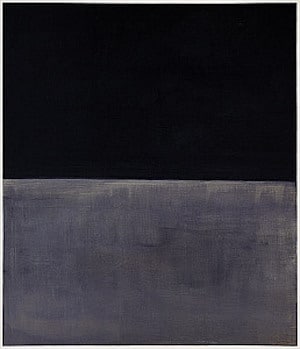
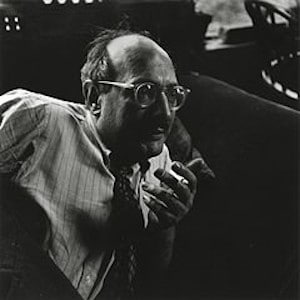
What Medium Did Rothko Use?
A painting’s medium is a big factor in the look and style of the painting. Rothko’s color field paintings have a wide range of colors within the fields. Many people wonder which medium he used for these large and bright paintings.
As a whole, Mark Rothko’s favorite medium was oil painting and most of his paintings use oil. However, he often experimented with the paint and added resins, eggs, glue, and dammar resin. He tested different drying speeds, viscosity, and layering abilities of the paint mixes he used.
Oil paint provides a smooth and glossy finish that reflects light in a way similar to velvet, which was why Rothko considered it his favorite medium. During a seminar at Carnegie Institute in 1950 about painting techniques for new artists, he said, “I have been working with oils for so long I don’t know anything else. I like these colors…for their ability to catch light and reflect it back with brilliance…my ideal would be to use as little color as possible.”
Some people are fans of Rothko’s painting style so much that they have great emotional reactions to them.


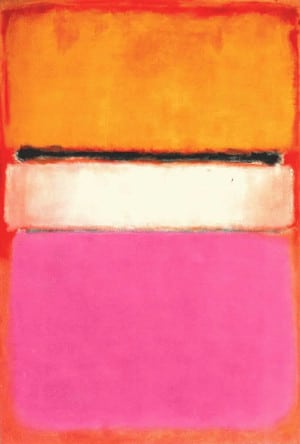
Why Do People Cry at Mark Rothko’s Paintings?
Mark Rothko is a controversial artist and his paintings are met with both extreme skepticism and extreme love. Some see the color fields as simple and ‘easy’ to produce, while others love the paintings so much that they cry when viewing them. Why are these viewers in tears?
People cry at Mark Rothko’s paintings because they say the artwork causes them to have an emotional and spiritual reaction. At the Rothko Chapel in Texas, many Rothko paintings are displayed. The chapel employs grief counselors to provide support for visiting guests.
Mark Rothko was well known for aiming to create powerful and emotionally charged abstract paintings. He painted while listening to classical music and when his father died, he entered into a deep depression, which ended in suicide.
He left notes for his family that talked about how important it was to leave something of oneself behind after death. Some people even say that they cry at Rothko’s paintings because they feel like he’s trying to communicate with them from beyond. Some have even said it felt like something supernatural happened to them when looking at one of his paintings. [4]
Feeling must have a medium in order to function at all; in the same way, thought must have symbols. It is the medium, or the specific configuration of the medium that we call a work of art that brings feeling into being, just as do responses to the objects of the external world… The medium of painting is such changing and ordering on an ideal plane, ideal in that the medium is more tractable, subtle, and capable of emphasis (abstraction is a kind of emphasis) than everyday life.
Mark Rothko [2]
In the 1940s and 1950s, Mark Rothko was often in a great deal of emotional pain due to some very unfortunate events. He would tell his wife he had been overwhelmed by emotions brought on by tragedy and experienced periods where he could only sleep three hours per night. His works have been examined from a psychological perspective, and from the perspective of dream interpretations. [7][8]
However, these hardships also inspired some of his most famous works. When visiting London for an exhibition opening, he painted Mural in response to seeing thousands of homeless men during blackouts caused by German bombing raids during World War II. This work still exists today in Tate Britain gallery, London.
Rothko’s first solo show followed at a gallery owned by Arshile Gorky in 1943. Gorky’s wife, artist, and future biographer Willem de Kooning served as a middleman between Rothko and Joseph Solman – who purchased one painting. During his lifetime, Rothko produced over 800 paintings.
He enjoyed a career that lasted nearly 60 years before passing away at 69 on February 25th, 1970. He made 8 large canvases right before death. This is highly unique and something mysterious about Rothko and his style.
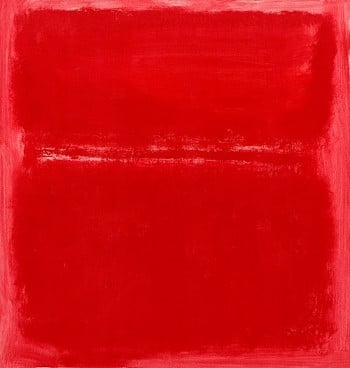
Why Are Rothko Paintings Considered Good?
With the controversy surrounding Mark Rothko’s style, passionate arguments are made in both directions. I’ve heard people argue that Rothko is one of the greatest painters and people argue that he was a complete fraud. It is common to wonder what makes Rothko’s color fields good art.
In total, Mark Rothko’s paintings are considered good because as abstract art they push the boundaries of what is considered art. Artists often try to rebel against the accepted norm of their day and generate debate about the human condition. Many find meaning in the deep colors of Rothko.
By comparing a pair of Rothko’s you can see they share many qualities:
- Seemingly random patches of color strewn across a canvas
- Lines in varying degrees and compositions
- Strokes with no discernible beginning or end
- Objects that appear larger than life or small enough to fit in your hand
| # | PAINTING NAME | YEAR PAINTED | LOCATION |
|---|---|---|---|
| 1 | Black on Maroon | 1958 | Tate Modern, London, United Kingdom |
| 2 | Number 61 (Rust and Blue) | 1953 | Museum of Contemporary Art, Los Angeles, California, United States |
| 3 | Entrance to Subway | 1938 | Private Collection |
| 4 | Green and Maroon | 1953 | The Phillips Collection, Washington DC, United States |
| 5 | Green and Tangerine on Red | 1956 | The Phillips Collection, Washington DC, United States |
| 6 | Blue Green and Brown | 1952 | Private Collection |
| 7 | Number 14 | 1960 | San Francisco Museum of Modern Art, San Francisco, United States |
| 8 | White Center (Yellow, Pink, and Lavender on Rose) | 1950 | Private Collection |
| 9 | Four Darks in Red | 1958 | Whitney Museum of American Art, New York, United States |
| 10 | Orange Red and Yellow | 1961 | Private Collection |
Paintings such as Jackson Pollock’s are widely considered masterpieces of modern art because of their intense aesthetic appeal. Rothko’s paintings are absent form, but that doesn’t mean they lack quality. The color fields are even used for inspiration in fashion. [6]
When someone examines Rothko’s earlier works, it is easy to see he was a talented painter. He created paintings that depict complex scenes and abstract creations. When he produced his color field paintings, he was purposely painting simple forms to focus the viewer’s eye on the exploration of color. This abstract view is the essence of Rothko’s style.
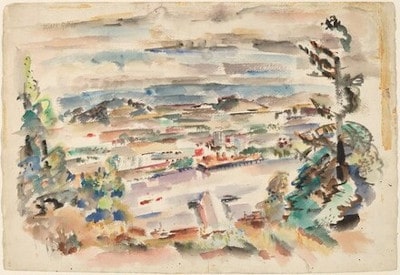
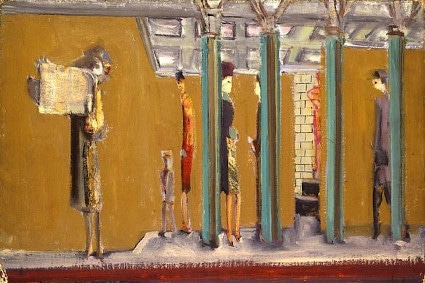
How Do You Appreciate a Rothko Painting?
Rothko’s controversial style is loved for the deep colors produced by the paintings. In low-resolution online versions, the variation in the painting’s color is not always visible. For those who have trouble loving Rothko paintings, how should someone appreciate them?
As a whole, the way to appreciate a Rothko painting is by seeing it in person. Rothko’s paintings have intricate details within the color fields that Rothko spent years adjusting. The viewers who have emotional reactions examine the painting up close in person.
Often, it’s a lengthy distance to travel to appreciate one of the originals. As a substitute, the best alternative is to find the highest resolution image possible. Some use meditation and mindfulness as a technique to appreciate Rothko’s paintings. [5]
I paint very large pictures. I realize that historically the function of painting large pictures is painting something very grandiose and pompous. The reason I paint them however – I think it applies to other painters I know – is precisely because I want to be very intimate and human. To paint a small picture is to place yourself outside your experience, to look upon an experience as a stereopticon view or with a reducing glass. However, you paint the larger picture, you are in it. It isn’t something you command.
Mark Rothko [3]
To those who came of age during Mark Rothko’s lifetime, his paintings were often considered a celebration of color and space. Yet for those who didn’t see his work before he died in 1970, Rothko’s expressionistic abstractions can appear impenetrable.
When viewing the color fields, it is important to consider the amount of effort that Rothko put into the pieces:
- Months or years of intense focus
- Exploring unconventional materials in his paint mixing
- Using them as an emotional outlet for his troubles
- Purposely disregarding the form to focus on color
Appreciating Rothko’s style is important if you want to draw on his style in your artwork or for style transfers. Looking for inspiration from other styles for your own artwork and style transfers?
- Express your creative side by checking out the Van Gogh Style Guide
- Peek at the masterpieces in the Picasso Style Guide
- Go on an abstract adventure with the Jackson Pollock Style Guide
- Get an impression of Monet’s masterpieces in the Monet Style Guide
- Journey through the symbolic depths with Frida Kahlo’s Style Guide
- Discover Dali’s surreal style with the Salvador Dali Style Guide
Want to learn more about how style transfers and neural networks work?
- Don’t lose out on my article about what content loss is!
- Want to know about Dropout in your own networks? Check out my post on if you should always use Dropout.
- One important factor is having a large enough set of training data to train the style transfer network. Want to learn more about making the training set larger? Check out my Data Augmentation post!
- Want to learn more about the influential VGG network? Check out my post covering why VGG is so common!

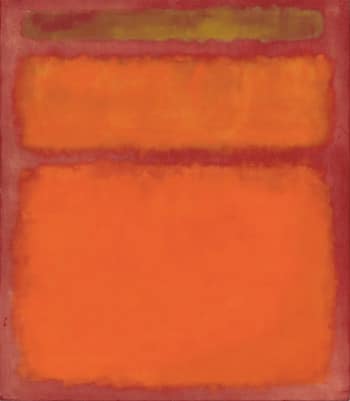
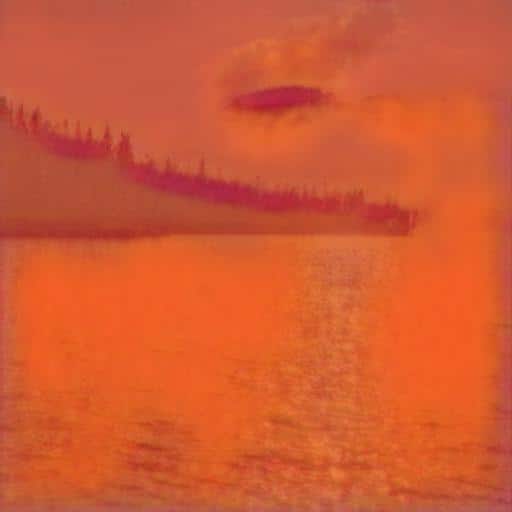
How to Make Paintings Like Mark Rothko
Many painters want to try their hand at Rothko’s style because it is useful for exploring painting colors and mixing them on the canvas. Here is a step by step guide:
- Choose three adjacent color squares on your palette that together form a triangle with at least one acute angle (less than 90 degrees). One square must be darker than its neighbors. For example, dark brown rather than dark red or blue-violet.
- Now, paint using only those three colors. No white or black is allowed. Try to avoid mixing other colors while working on your canvas—keep it simple! Most of all, remember not to second-guess yourself and keep pressing forward until you are done (this can take hours!) Rothko often had a mess in his studio after weeks of painting.
- Check that each brushstroke blends seamlessly into its neighbor, and if possible use no more than four strokes per square inch of canvas. Remember: Mark Rothko often took hours just to lay down an initial coat.
- Once your canvas is complete, step back from it for a day and look at what you’ve done. Take time to absorb its form before moving on to Step 4. If anything about it bothers you, change it immediately. Don’t ever repeat yourself!
- Repeat steps 1–4 once per day for 50 days (Rothko had non-stop painting sessions): It may be difficult at first but he did not give up. Your emotions will most likely range from absolute frustration to sheer joy and everything in between.
Final Thoughts on Rothko
Mark Rothko was an artist with a unique style that is still thought-provoking and controversial today. He depicted emotion through color variation and abstract art pieces. His artwork is highly sought after and sells for millions of dollars worldwide. His style continues to inspire and can be used for your artwork or style transfers.
Want to know more about style transfers and digital art? Read my post about Style Transfers, Neural Networks, and Digital Art.
If you want to check out other posts related to style transfers, check out the Style Transfers category.
Want to learn more about neural networks in python? Check out my tutorial about implementing Bayesian Neural Networks using the most popular python libraries.
Get Notified When We Publish Similar Articles
References
- Rothko, Mark, and Miguel Remiro. Writings on art. New Haven: Yale University Press, 2006. Print. https://www.worldcat.org/title/writings-on-art/oclc/62302364
- Motherwell, Robert. “Beyond the Aesthetic.” Taylor & Francis, https://www.tandfonline.com/doi/abs/10.1080/00119253.1946.10742491
- Ross, Clifford. Abstract expressionism : creators and critics : an anthology. New York: H.N. Abrams, 1990. Print. https://www.worldcat.org/title/abstract-expressionism-creators-and-critics-an-anthology/oclc/246769092
- Stoker, Wessel. “The Rothko Chapel Paintings and the ‘urgency of the transcendent experience’.” International Journal for Philosophy of Religion 64.2 (2008): 89-102. https://link.springer.com/content/pdf/10.1007/s11153-008-9165-x.pdf
- Echarri, Fernando, and Carmen Urpi. “Mindfulness in art contemplation. The story of a Rothko experience.” Journal of Museum Education 43.1 (2018): 35-46. https://www.tandfonline.com/doi/abs/10.1080/10598650.2017.1384977
- Park, Kyung-Mi, and Mi-Ryang Lee. “A Study on Fashion Design Applied from Color-Field Abstract of Mark Rothko: Focusing on Needle-Punching Felt Technique.” The International Journal of Costume Culture 13.2 (2010): 141-153 https://www.koreascience.or.kr/article/JAKO201016637927223.pdf
- Sedivi, Amy Elizabeth. “Unveiling the unconscious: The influence of Jungian psychology on Jackson Pollock and Mark Rothko.” (2009). https://scholarworks.wm.edu/honorstheses/284/
- Turco, Ronald. “The object and the dream: Mark Rothko.” Journal of the American Academy of Psychoanalysis and Dynamic Psychiatry 30.1 (2002): 17-34. https://guilfordjournals.com/doi/10.1521/jaap.30.1.17.21984
- Qiu, Jane. “Rothko’s methods revealed.” Nature 456.7221 (2008): 447-447. https://www.nature.com/articles/456447a
